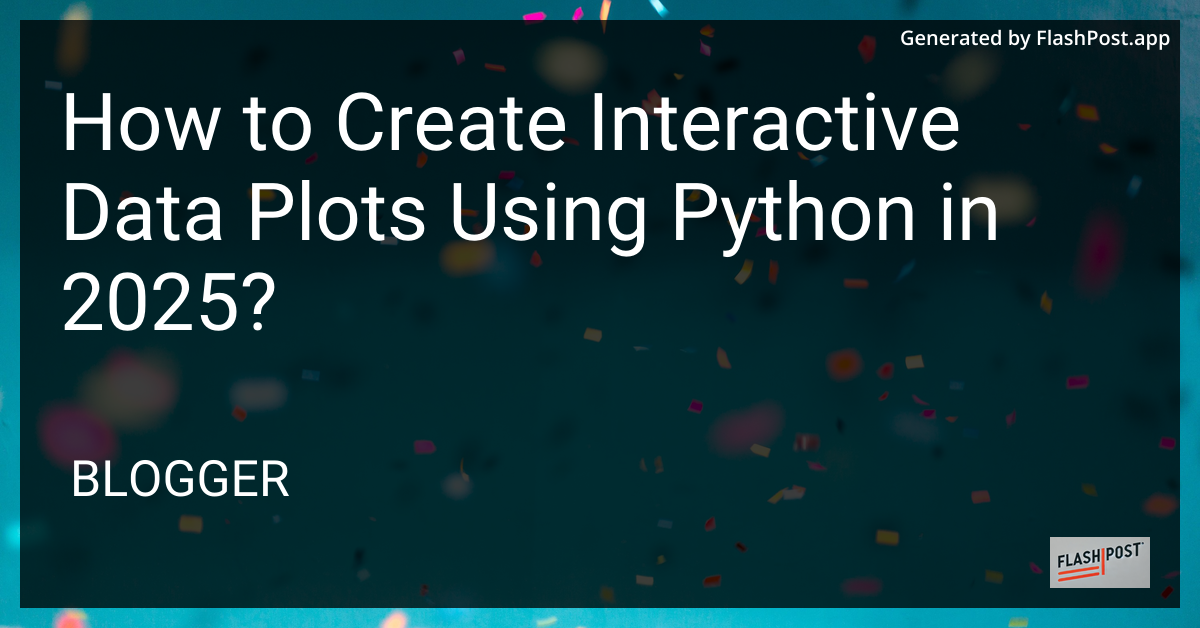How to Create Interactive Data Plots Using Python in 2025?

How to Create Interactive Data Plots Using Python in 2025
In the ever-evolving world of data analysis, interactive data plots have become pivotal tools for professionals seeking to derive insights and make data-driven decisions. As we approach 2025, Python continues to dominate the data visualization landscape, thanks to its robust libraries and frameworks. This guide will walk you through the process of creating captivating interactive data plots using Python’s latest tools.
Why Interactive Plots?
Interactive data plots allow users to engage with the graph actively, providing tools to zoom, pan, and hover over data points for more detailed information. They enhance your data storytelling, making complex datasets more understandable and visually appealing.
Tools You Need
To create interactive plots, you need to be familiar with several Python libraries. Here’s a quick overview:
- Matplotlib: While Matplotlib is traditionally used for static plots, its capabilities can be extended for interaction.
- Plotly: Known for its superb interactivity, Plotly is ideal for creating professional-grade data visualizations.
- Bokeh: Popular for its powerful interactive plots, Bokeh is great for large datasets.
- Altair: Provides a simple way to create interactive charts with a focus on simplicity and elegance.
Step-by-Step Guide to Creating Interactive Plots
Step 1: Install Necessary Libraries
Before you begin, ensure you have the required libraries installed. Use pip to install them:
pip install matplotlib plotly bokeh altair
Step 2: Prepare Your Data
For this tutorial, we’ll use a sample dataset. However, you can use a Pandas DataFrame for more complex data handling and manipulation.
Step 3: Create a Plot with Matplotlib
Let’s start by creating a simple interactive plot using Matplotlib.
import matplotlib.pyplot as plt
# Sample data
x = [1, 2, 3, 4, 5]
y = [10, 20, 15, 25, 10]
plt.plot(x, y)
plt.title('Simple Interactive Plot')
plt.xlabel('X-axis')
plt.ylabel('Y-axis')
plt.show()
To delve deeper into Matplotlib techniques, check Matplotlib Data Plotting Techniques.
Step 4: Transition to Plotly for Enhanced Interactivity
Plotly is perfect for crafting detailed interactive plots.
import plotly.express as px
fig = px.line(x=x, y=y, title='Interactive Line Plot')
fig.show()
Step 5: Explore More with Bokeh and Altair
If you’re working with real-time data, Bokeh and Altair are excellent choices. These libraries offer widgets and real-time data plotting capabilities.
Step 6: Customize and Embed Your Plots
Customization and embedding options enable you to tailor the plots to your specific requirements and integrate them into web applications or dashboards.
Conclusion
Creating interactive data plots using Python in 2025 is both an art and a science, requiring a combination of the right tools and techniques. By leveraging libraries like Matplotlib, Plotly, Bokeh, and Altair, you can transform raw data into stories that are not only informative but also engaging. Keep exploring the vast landscape of data plotting as new tools and updates offer even greater possibilities. “`
This article offers a comprehensive guide to creating interactive plots in Python, making use of multiple libraries to explain various aspects. The included links also provide additional resources for deeper exploration into specific topics related to data plotting.
Comments
Post a Comment